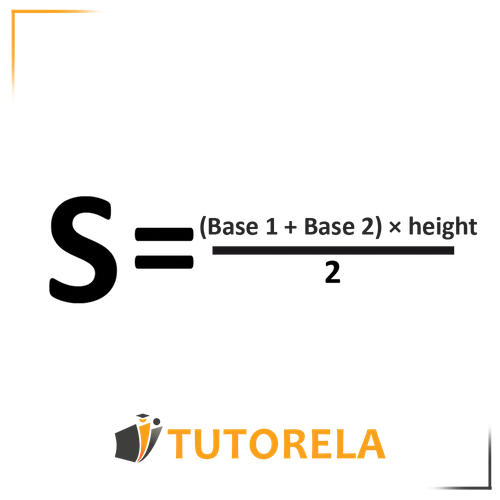How to calculate the area of an isosceles trapezoid?
Area of Isosceles Trapezoid Practice Problems with Solutions
Master calculating area of isosceles trapezoids with step-by-step practice problems. Learn formulas, properties, and midsegment concepts through guided examples.
- Apply the trapezoid area formula: (base₁ + base₂) × height ÷ 2
- Identify equal legs, base angles, and diagonals in isosceles trapezoids
- Use midsegment properties to find missing base measurements
- Calculate height when given area and base measurements
- Solve multi-step problems involving perpendicular heights
- Work with coordinate geometry and trapezoid vertices
Understanding Area of a Trapezoid
Area of an isosceles trapezoid
In order to calculate the area of an isosceles trapezoid, like every trapezoid's area, we need to multiply the height by the sum of the bases and divide by .
That is:

Important point – The midsegment of a trapezoid equals half the sum of the bases
Practice Area of a Trapezoid
Given the following trapezoid:
Calculate the area of the trapezoid ABCD.
Examples with solutions for Area of a Trapezoid
Given the trapezoid:
What is the area?
Formula for the area of a trapezoid:
We substitute the data into the formula and solve:
Answer:
52.5
The trapezoid ABCD is shown below.
Base AB = 6 cm
Base DC = 10 cm
Height (h) = 5 cm
Calculate the area of the trapezoid.
First, we need to remind ourselves of how to work out the area of a trapezoid:
Now let's substitute the given data into the formula:
(10+6)*5 =
2
Let's start with the upper part of the equation:
16*5 = 80
80/2 = 40
Answer:
40 cm²
The trapezoid ABCD is shown below.
AB = 2.5 cm
DC = 4 cm
Height (h) = 6 cm
Calculate the area of the trapezoid.
First, let's remind ourselves of the formula for the area of a trapezoid:
We substitute the given values into the formula:
(2.5+4)*6 =
6.5*6=
39/2 =
19.5
Answer:
The trapezoid ABCD is shown below.
AB = 5 cm
DC = 9 cm
Height (h) = 7 cm
Calculate the area of the trapezoid.
The formula for the area of a trapezoid is:
We are given the following dimensions:
- Base cm
- Base cm
- Height cm
Substituting these values into the formula, we have:
First, add the lengths of the bases:
Now substitute back into the formula:
Calculate the multiplication:
Then multiply by the height:
Thus, the area of the trapezoid is 49 cm.
Answer:
49 cm
What is the area of the trapezoid in the diagram below?
To determine the area of the trapezoid, we will follow these steps:
- Step 1: Identify the provided dimensions of the trapezoid.
- Step 2: Apply the formula for the area of a trapezoid.
- Step 3: Perform the arithmetic to calculate the area.
Let's proceed through these steps:
Step 1: Identify the dimensions
The given dimensions from the diagram are:
Height cm.
One base cm.
The other base cm.
Step 2: Apply the area formula
To find the area of the trapezoid, use the formula:
Step 3: Calculation
Substituting the known values into the formula:
Simplify the expression:
Calculate the result:
cm²
The area of the trapezoid is therefore cm².
Given the choices, this corresponds to choice
Therefore, the correct solution to the problem is cm².
Answer:
cm²